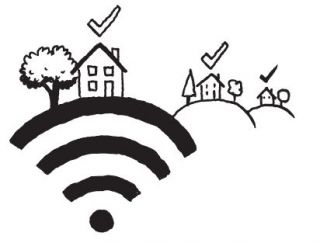Time to Deliver on the National Broadband Plan

Time to Deliver on the National Broadband Plan
As part of the Government’s response to the Covid-19 pandemic, schools, colleges, training centres and workplaces all closed to limit movement of people over a year ago, with sporadic and temporary openings since. How we engage with work and education has fundamentally changed in that twelve-month period as we mostly move to an online environment. Figures from the CSO show that about 89 per cent of the population were recent users of the internet and that only 8 per cent have never used the internet which is a drop from 11 per cent in 2019.[1]
As Ireland adapts to this digital environment, broadband, particularly for rural areas, is essential. If Ireland is to keep pace with changes to work and learning practices as well as globalisation while also ensuring balanced rural development, the National Broadband Plan must be implemented in full. With many adults and children both working and learning from home, good quality, affordable, reliable internet connection is now a necessity, not a luxury. It is an essential economic, social and educational inclusion tool that enables people to fully participate in society and remain connected and informed. It will be important to ensure ease and equality of access so that already disadvantaged or marginalised groups do not fall further behind. If the change to working from home becomes permanent for many, location will no longer be an issue allowing many to relocate from expensive urban centres to more rural locations. Quality, reliable affordable broadband will be key.
The Government’s Rural Development Policy 2021- 2025 ‘Our Rural Future’[2] recognises that “high quality digital connectivity offers an unprecedented opportunity to transform rural Ireland”. Decisions made now about how we transition to a more sustainable society and how we ensure rural areas and regions are supported to adapt to the potential impact of the future of work will determine what kind of rural communities we will have in Ireland by 2040. In order to deliver on the ambition of ‘Our Rural Future’, Government must deliver the resources, services and infrastructure required.
The Department of the Environment, Climate and Communications have identified all the premises across the country that do not yet have access to a high-speed broadband connection. This is known as the intervention area and Chart 1 shows that some counties are less connected than others as a percentage of overall premises and that much work still needs to be done to ensure equity of access.
Chart 1: Percentage of premises in County without High-Speed Broadband
Source: National Broadband Ireland, County Breakdown by Intervention. December 2020
The importance of access
More than a decade ago, the European Commission recognised that ‘Digital literacy is increasingly becoming an essential life competence and the inability to access or use ICT has effectively become a barrier to social integration and personal development. Those without sufficient ICT skills are disadvantaged in the labour market and have less access to information to empower themselves as consumer, or as citizens saving time and money in offline activities and using online public services.[3] Over ten years later, there are still areas in (particularly rural) Ireland who continue to be disadvantaged in this way, with the digital divide further exacerbating educational disadvantage in areas with poor connectivity as is clearly seen in Chart 1.
Internet connectivity in 2020 stood at 92 per cent, an increase of one percentage points on 2019. Households with children are almost all connected to the internet as opposed to just 79 per cent of adult households with no children. Fixed broadband connection is the most commonly used, accounting for 85 per cent of households (an increase of 1 percentage points on 2019). Households in Dublin continue to outpace the rest of the country for access to fixed broadband (with 92 per cent), while the West and Border Regions fare the worst (with 79 per cent and 73 per cent respectively).[4]
At European level, Ireland ranks 6th in the EU Digital Economy and Society Index (DESI), up two places on the previous year having improved in all dimensions measured (European Commission, 2020). They report that fixed, very high-capacity network (VHCN) coverage has jumped from 13 per cent in 2019 to 21 per cent in 2020 but still lags behind the EU average of 44 per cent and importantly in terms of equality of access, Ireland is one of the EU’s most expensive countries in terms of broadband (ranking 27th). Given its status as an essential tool for work and education, this must be addressed.
Social Justice Ireland urges Government to expedite the roll-out on the National Broadband Plan without further delays.
[1]https://www.cso.ie/en/releasesandpublications/ep/p-isshh/informationsoc…
[2]https://www.gov.ie/en/publication/4c236-our-rural-future-vision-and-pol…
[3]https://joinup.ec.europa.eu/sites/default/files/document/2014-12/i2010%…
[4]https://www.cso.ie/en/releasesandpublications/ep/p-isshh/informationsoc…